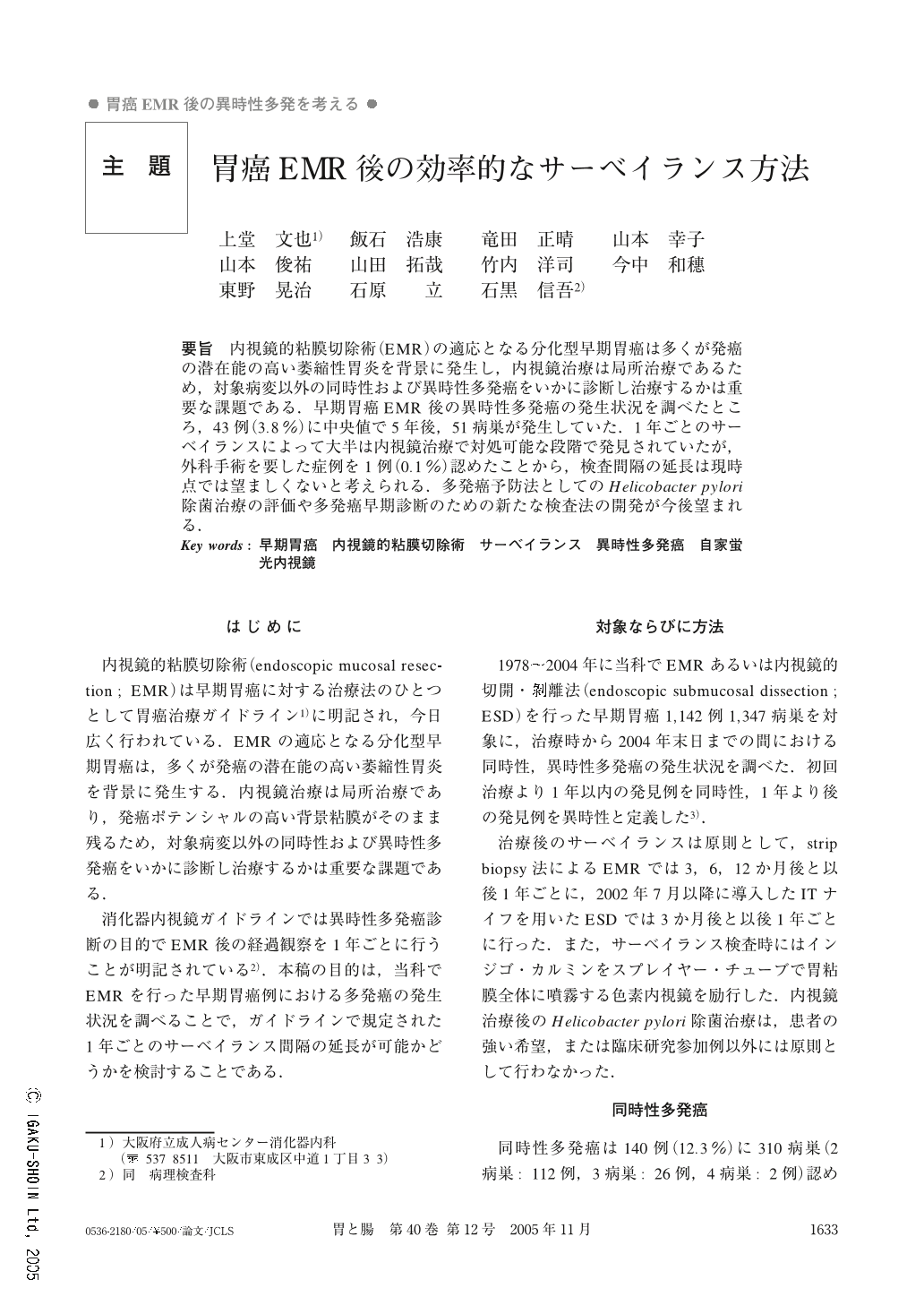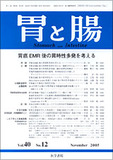Japanese
English
- 有料閲覧
- Abstract 文献概要
- 1ページ目 Look Inside
- 参考文献 Reference
- サイト内被引用 Cited by
要旨 内視鏡的粘膜切除術(EMR)の適応となる分化型早期胃癌は多くが発癌の潜在能の高い萎縮性胃炎を背景に発生し,内視鏡治療は局所治療であるため,対象病変以外の同時性および異時性多発癌をいかに診断し治療するかは重要な課題である.早期胃癌EMR後の異時性多発癌の発生状況を調べたところ,43例(3.8%)に中央値で5年後,51病巣が発生していた.1年ごとのサーベイランスによって大半は内視鏡治療で対処可能な段階で発見されていたが,外科手術を要した症例を1例(0.1%)認めたことから,検査間隔の延長は現時点では望ましくないと考えられる.多発癌予防法としてのHelicobacter pylori除菌治療の評価や多発癌早期診断のための新たな検査法の開発が今後望まれる.
We investigated the occurrence of metachronous multiple carcinoma (MMCA) in the stomach in 1,142 patients with 1,347 early gastric carcinomas who underwent endoscopic mucosal resection (EMR) between 1978 and 2004. The patients were encouraged to receive surveillance endoscopic examination every year. A total of 51 MMCA developed in 43 (3.8%) patients. 49 lesions (96%) were differentiated type mucosal or minimally submucosal invasive carcinoma without ulceration or scar and were removed by EMR. One patient with poorly differentiated adenocarcinoma underwent endoscopic treatment with submucosal dissecting methods because the patient refused to be operated on. One patient with submucosal carcinoma received gastrectomy with lymph node dissection. MMCAs which were larger than 2cm or undifferentiated type carcinoma frequently existed in the gastric body and were the shallow depressed type. Autofluorescence videoendoscopy was able to detect more small flat synchronous multiple carcinomas that were not evident to ordinary white light endoscopy. We concluded that a yearly endoscopic surveillance is necessary after EMR for early gastric carcinomas.

Copyright © 2005, Igaku-Shoin Ltd. All rights reserved.


